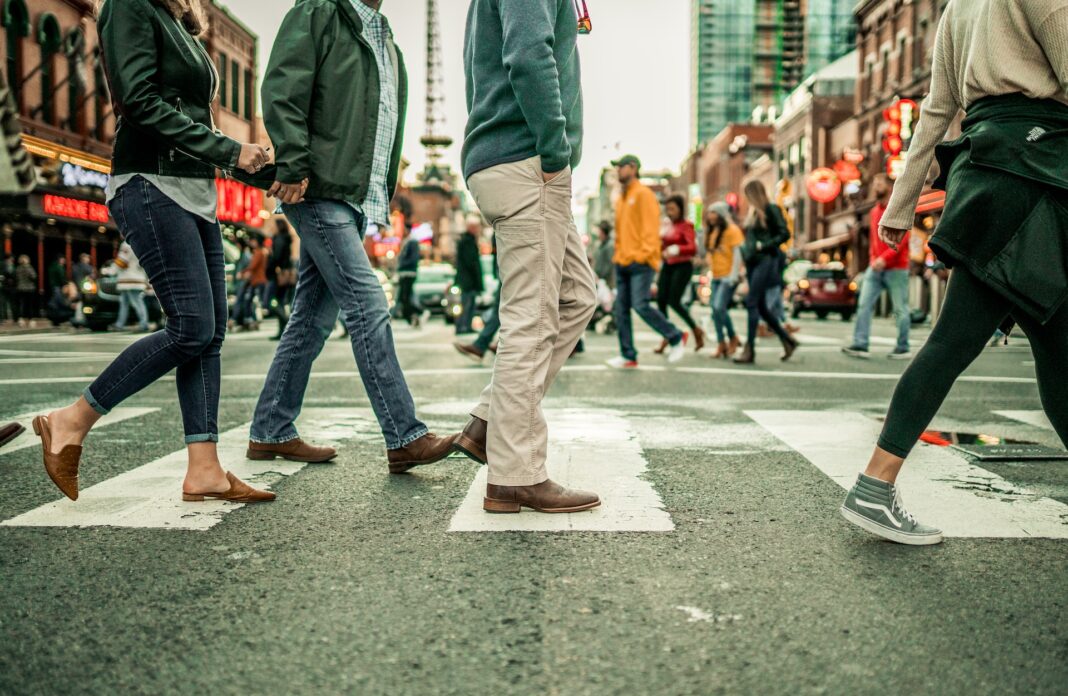UNITED STATES—Pedestrians in the East Bay region of California must take special care when walking through their neighborhoods, getting to work, and enjoying the city. Stepping off the curb should be safe for all walkers, but speeding, intoxicated driving, and inattentive driving have made sharing the road a worrying hazard. According to the California Office of Traffic Safety (OTS), Oakland had 255 incidents where pedestrians were killed or injured in an automotive crash in 2020. The whole of Alameda County had 549 victims.
High-injury corridors are specific routes where pedestrian injuries are more common. These roads coincide with what Oakland terms “High Priority Neighborhoods.” They have the highest prevalence of people of color, households with limited English proficiency, single parents, disabled people, elderly people, and people who are rent-burdened. According to the OakDOT Geographic Equity Toolbox, these same neighborhoods face increasing displacement due to gentrification. This combination of factors contributes to both a high population density and increased traffic to areas of rapid urban development.
The East Bay area cities and Alameda County as a whole have all worked toward safe pedestrian initiatives. One such program is called Vision Zero, which embraces the possibility of no traffic-related fatalities. To achieve this, the program suggests the introduction of preventative infrastructure like brighter street lights, speed reduction measures, robust pedestrian crossing signals, and a targeted police presence in known “hot zones.” But, this program is not without its criticism. Vision Zero initiatives burden drivers with increased wait times and longer commutes in areas of already congested traffic. Additionally, infrastructure changes need funds. This can create political pushback, which further complicates the road to change.
While drivers have the legal requirement to yield to pedestrians in every situation, the reality is that humans are bound to make mistakes behind the wheel. But there are things pedestrians can do to increase their safety and avoid an automotive crash:
- Avoid walking on the road or where vehicles have access when visibility is low, like at night or during inclement weather.
- Increase your visibility to drivers, especially if you are walking at night. Use a flashlight, reflective clothing, clip-on lights, or light-up accessories.
- Cross streets at designated pedestrian crossing areas whenever possible. If there is no designated crossing area, cross where drivers will be able to see you in time to stop.
- Be attentive when you are walking near or around moving traffic. Make sure that you can see and hear what is going on around you. You may hear a vehicle approaching before you can see it.
- Do not walk if you are intoxicated, drowsy, or otherwise incapacitated.
- If you must walk on the road or on the shoulder, walk so that you are facing traffic with your head up. Drivers are more likely to see you if you are facing them.
Despite pedestrian death and injury due to automotive crashes, traveling on foot is a necessity for many. Walking where you may encounter vehicles is inevitable, but taking part in your own safety can make a difference. Never trust that a vehicle will stop because you are on the road or a crosswalk or that a driver is able to see you or is paying attention. All pedestrians deserve safe places to walk, but the busy East Bay area still has work to do in regard to securing those spaces.
Car, bicycle and pedestrian accidents are on the rise throughout California and across the US. San Pablo, in the East Bay, experienced 118 serious collisions in 2022 alone. Cities across the country, as well as community members can work together to create safer streets.
You can get involved and help make a difference in pedestrian safety by contacting your local municipality about damaged sidewalks, crosswalks, streetlights, and ADA ramps. If you believe that there is a specific area of concern regarding vehicles speeding or driving carelessly, call your local police non-emergency number. The City of Oakland, Fremont, and Richmond have current pedestrian safety plans underway.






